Inside Dries Van Noten’s Last-Ever Runway Show
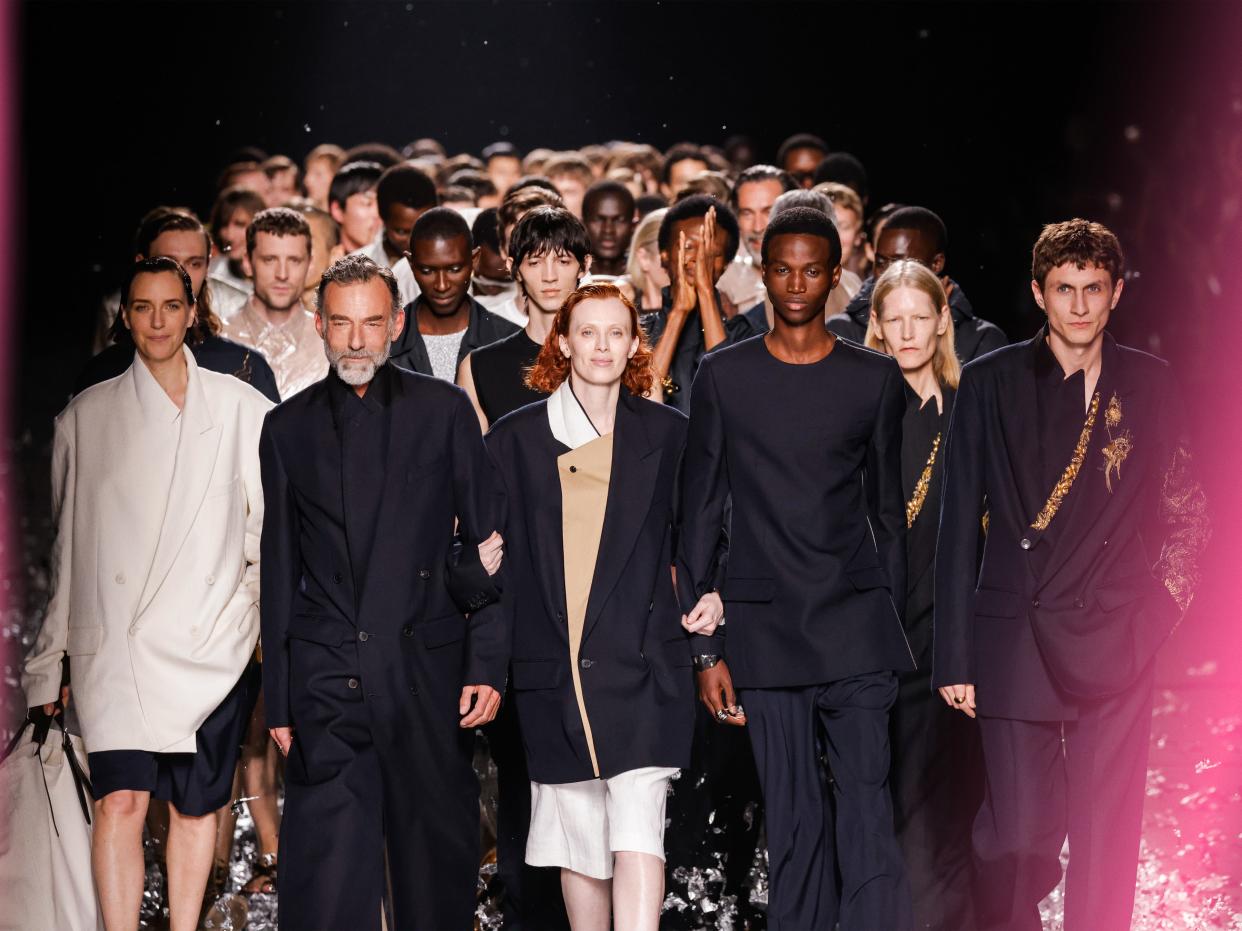
Courtesy of Getty Images / Richard Bord
This is an edition of the newsletter Show Notes, in which Samuel Hine reports from the front row of the global fashion week circuit. Sign up here to get it in your inbox.
“It’s all a little bit overwhelming,” Dries Van Noten told me. On Saturday night, the legendary Belgian fashion designer was working the room before his swan song runway show, hugging and kissing a steady stream of friends and admirers who had come from far and wide to send off the fashion hall of famer into retirement. It was an event with little precedent on the menswear circuit. Van Noten announced his plans to step back from his namesake brand in March, to “shift my focus to all the things I never had the time for,” as he said at the time. The 129th show and 150th collection of his 38-year career would be his grand finale. Dries Van Noten productions have a way of conjuring a celebratory atmosphere, and on Saturday the party started well before any clothes catwalked down the runway. But the scene at the defunct factory in La Courneuve was emotionally charged. When Van Noten turned away to greet more well-wishers, he was blinking back tears.
“For me, his work is poetry and beauty of course and perfection,” summed up Glenn Martens, the Belgian designer of Y/Project and Diesel. Though Van Noten will continue to have an advisory role in his company, it’s hard to avoid the sense that an important era is coming to a close. Said Martens, “I think there's really no brand or designer which can compete with his perfection, his beauty, and his mastership. So there’s going to be a gap, no? We're going to miss him.” “Really, it’s sad for fashion today,” added the designer Meryll Rogge, a Dries Van Noten disciple who was his womenswear head from 2014 to 2018. “There are very few independent brands that do really well. But on the other hand, I'm so happy for him that after all these years he can finally relax a little bit and get the time with his husband and his dog and his extended family as he deserves.”
Indeed, Van Noten is of a woefully rare breed in fashion. Throughout his career, the Antwerp Six member built an independent business from the ground up by making high-quality garments that added depth to his customers’ daily lives for years on end. His name looms particularly large in menswear, where he taught generations of men how to dress with a sense of artful integrity, bringing them on a journey of color, pattern, and texture that defied the rise and fall of every trend.
“I hate this cliche, but he’s always marched by the beat of his own drum,” said MET Costume Institute curatorial head Andrew Bolton. “He has always been slightly outside of fashion trends and the fashion system per se, and he’s always found this really consistent and distinct voice. And that’s created a deep, intimate connection with his customers.”
Naturally, many of the 800-plus attendees were decked out in their favorite Dries Van Noten outfits; there were enough florals in the room to fill the magical garden at Van Noten’s country estate outside Antwerp. As guests sipped on champagne and picked at canapes, they watched a four-sided screen in the center of the room which played a collage of significant moments from Van Noten’s career. I found Russell Westbrook staring up at the projection. The hooper was there, he told me, because Dries Van Noten was the first Paris Fashion Week show he ever attended back when he was breaking into the fashion world. “I’m so grateful to be here,” Westbrook said. He pointed at an image from the watershed Spring-Summer 2019 men’s collection, which featured a wavy Verner Panton collab that became one of the defining moments of that season. “I got those pants and that jacket,” he said. “Ever since, I’ve been inspired by what he’s done.”

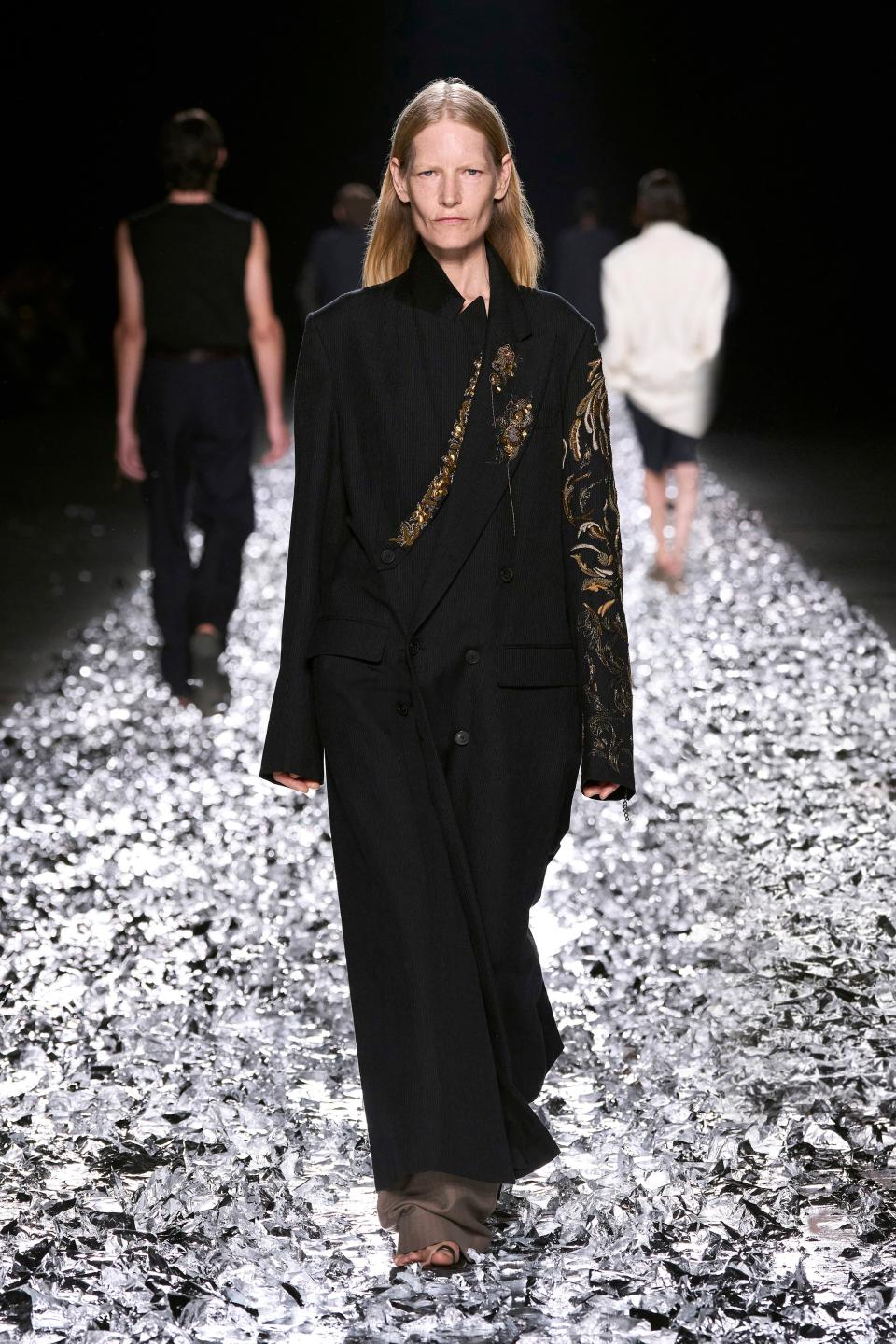
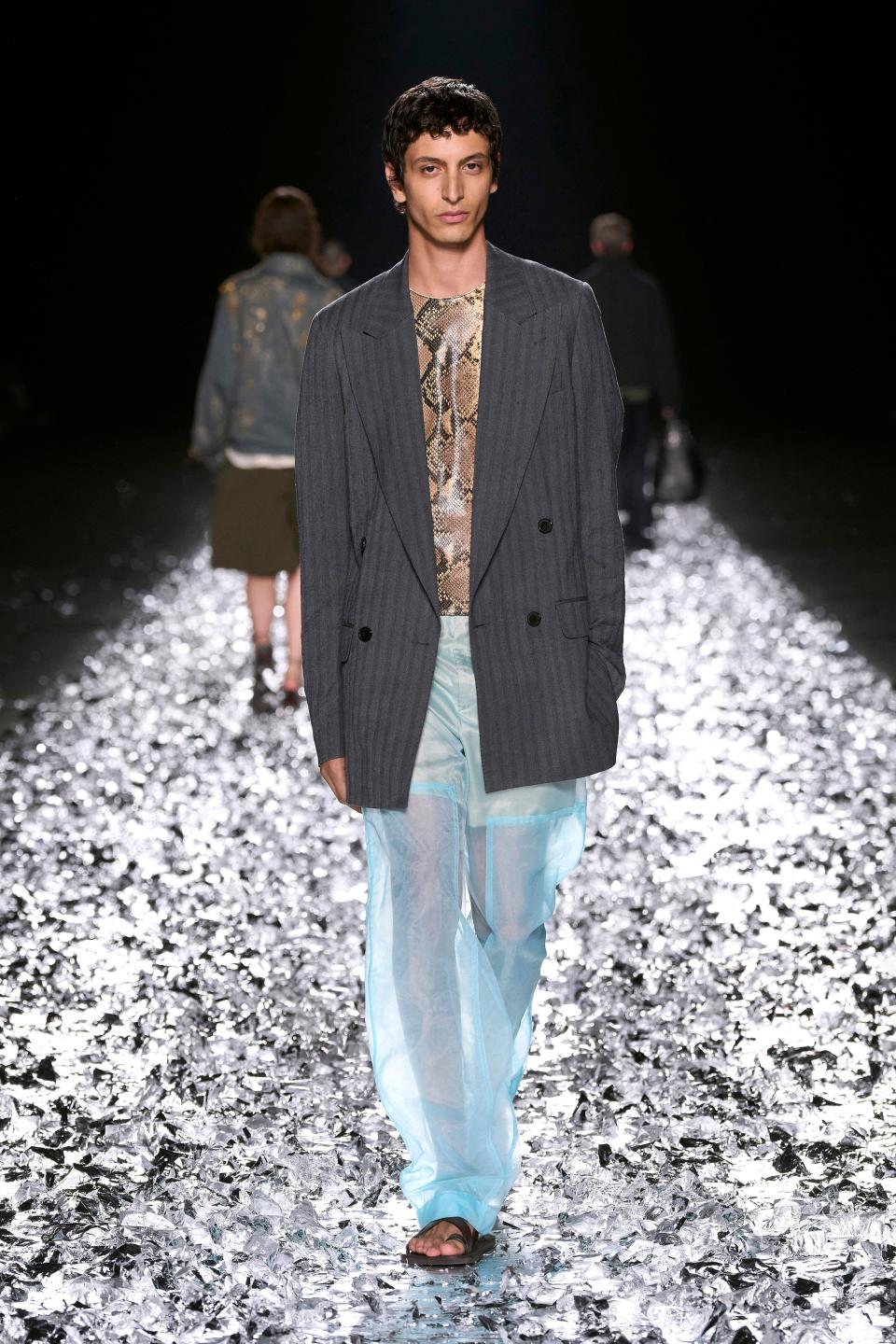
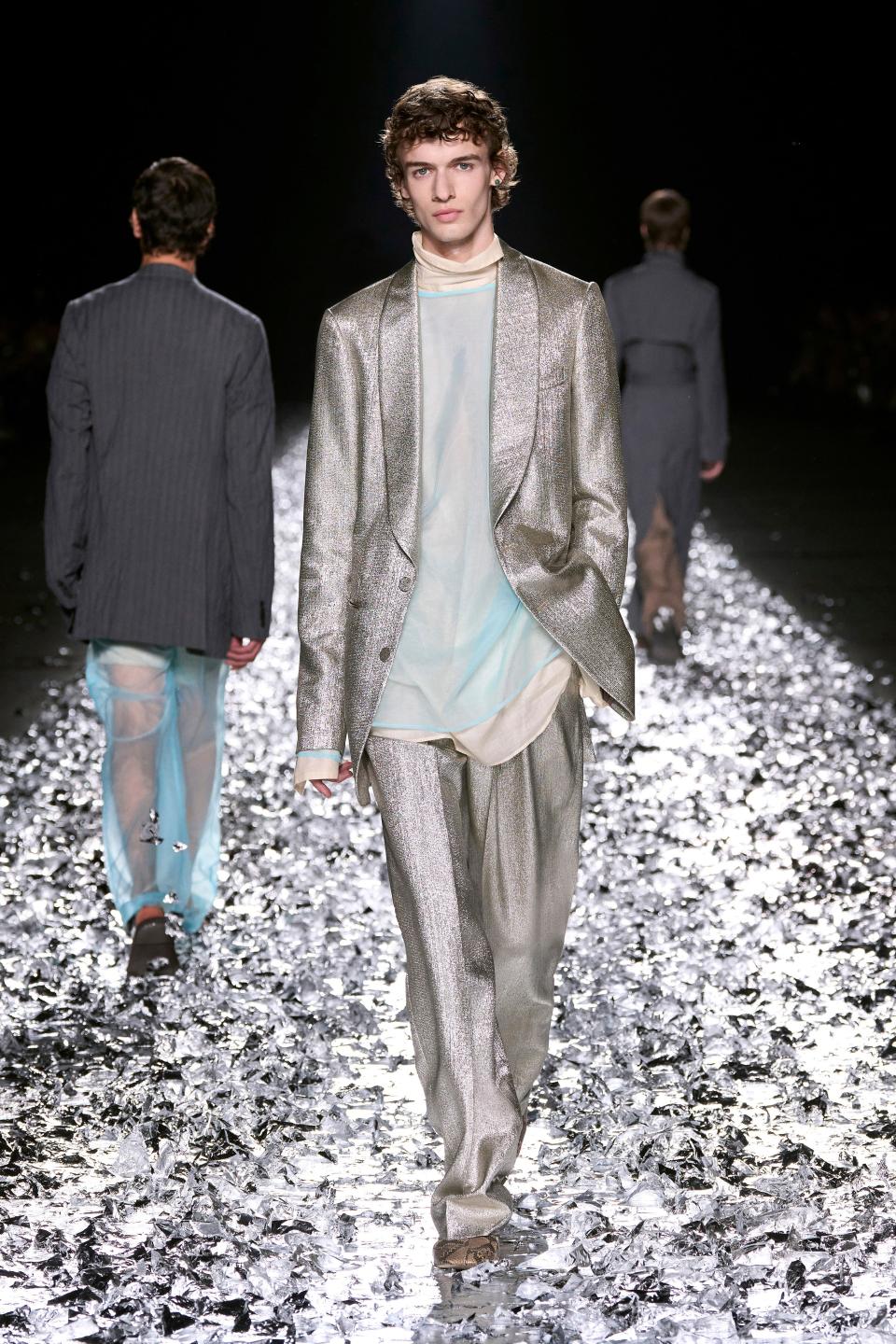
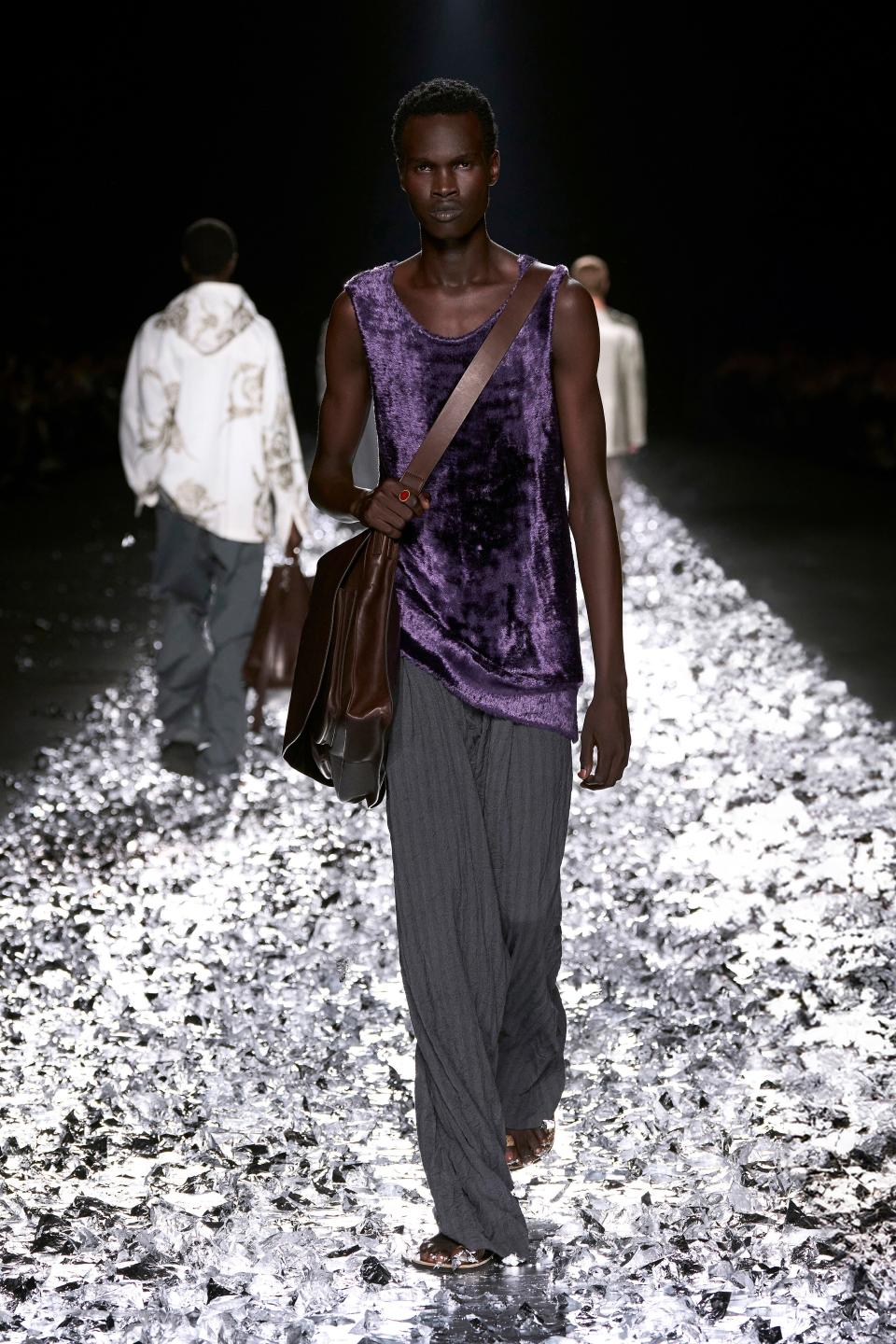
Martens and Rogge were two of over a dozen designers in the house. I spotted Walter Van Beirendonck, Ann Demeulemeester, Pierpaolo Piccioli, Haider Ackermann, Thom Browne, Veronique Nichanian, Kris Van Assche, and Diane Von Furstenberg. “You know, you make the decision,” Von Furstenberg told me of her Belgian countryman’s graceful exit. “He seems very happy.” Rumor had it that Martin Margiela had made the trip from Antwerp; I was told he was invited but not in attendance, which did nothing to stop me from searching high and low for the reclusive avante-garde icon.
Van Noten is a designer’s designer, and his influence extends well beyond the tight-knit Belgian fashion scene. “Dries has inspired all of us, by the way he’s approached his own collections over the years, and being true to himself and telling his own story,” said Thom Browne, who noted he was attending his “first and last” Dries Van Noten show. “It’s about celebrating his career,” he said.
Margiela aside, the real question was whether the next designer of Dries Van Noten was in the room. In his retirement statement, Van Noten said it was “time to leave room for a new generation of talents to bring their vision to the brand.” I asked Rogge if she cared to comment on the growing speculation that she’s next in line. “Absolutely not!” the Belgian native said with a laugh. “But thank you for asking.”
“You are not?” interjected Martens. “We still don’t know it’s you, eh?”
“I can’t confirm!” Rogge replied.
“Are you going to be announced tonight or not?” Martens teased. “Of course, I hope it’s going to be Meryll,” he added.
For her part, Rogge said, “I'm hoping it’s going to be someone who is going to care about the house and take care of the house.”
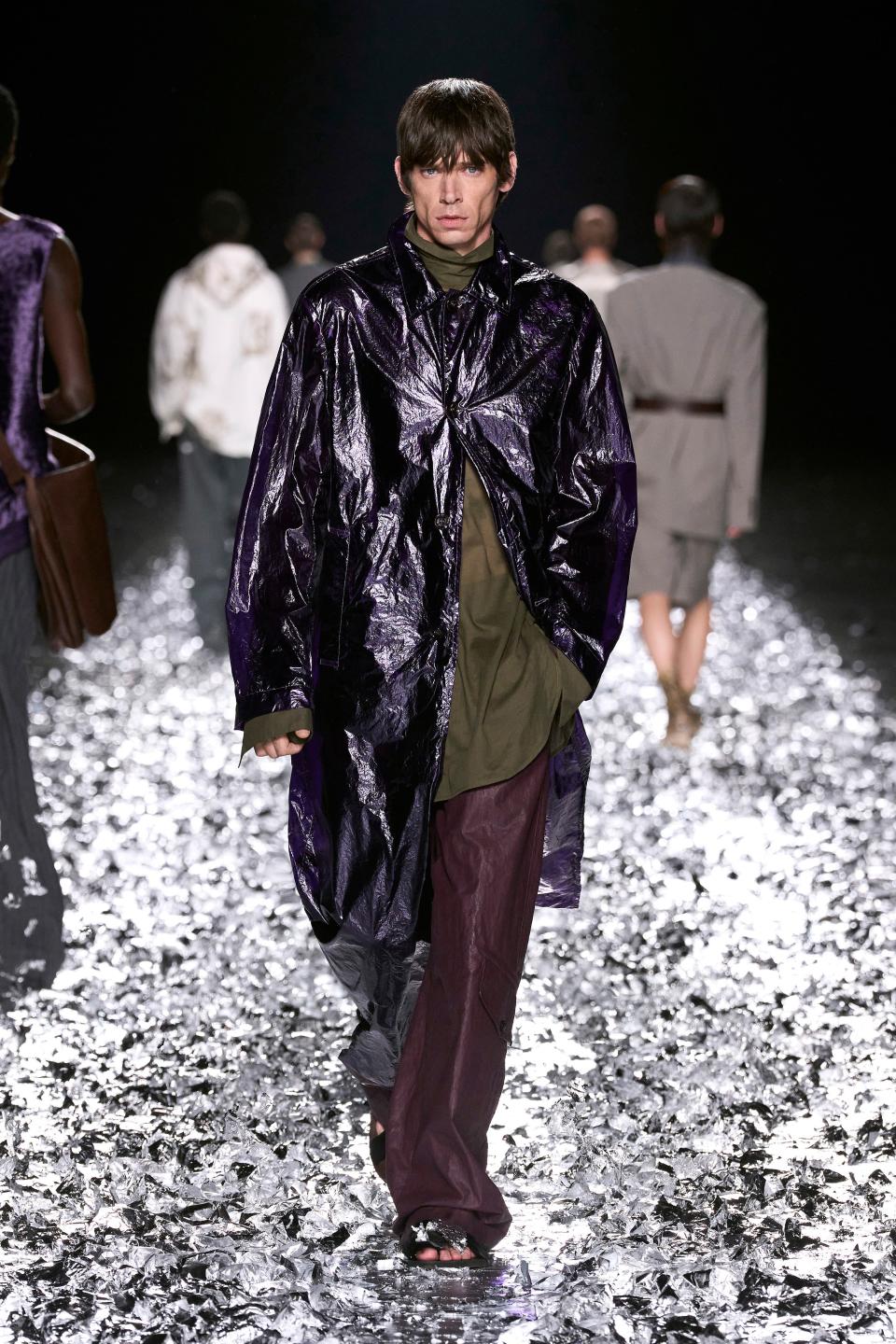
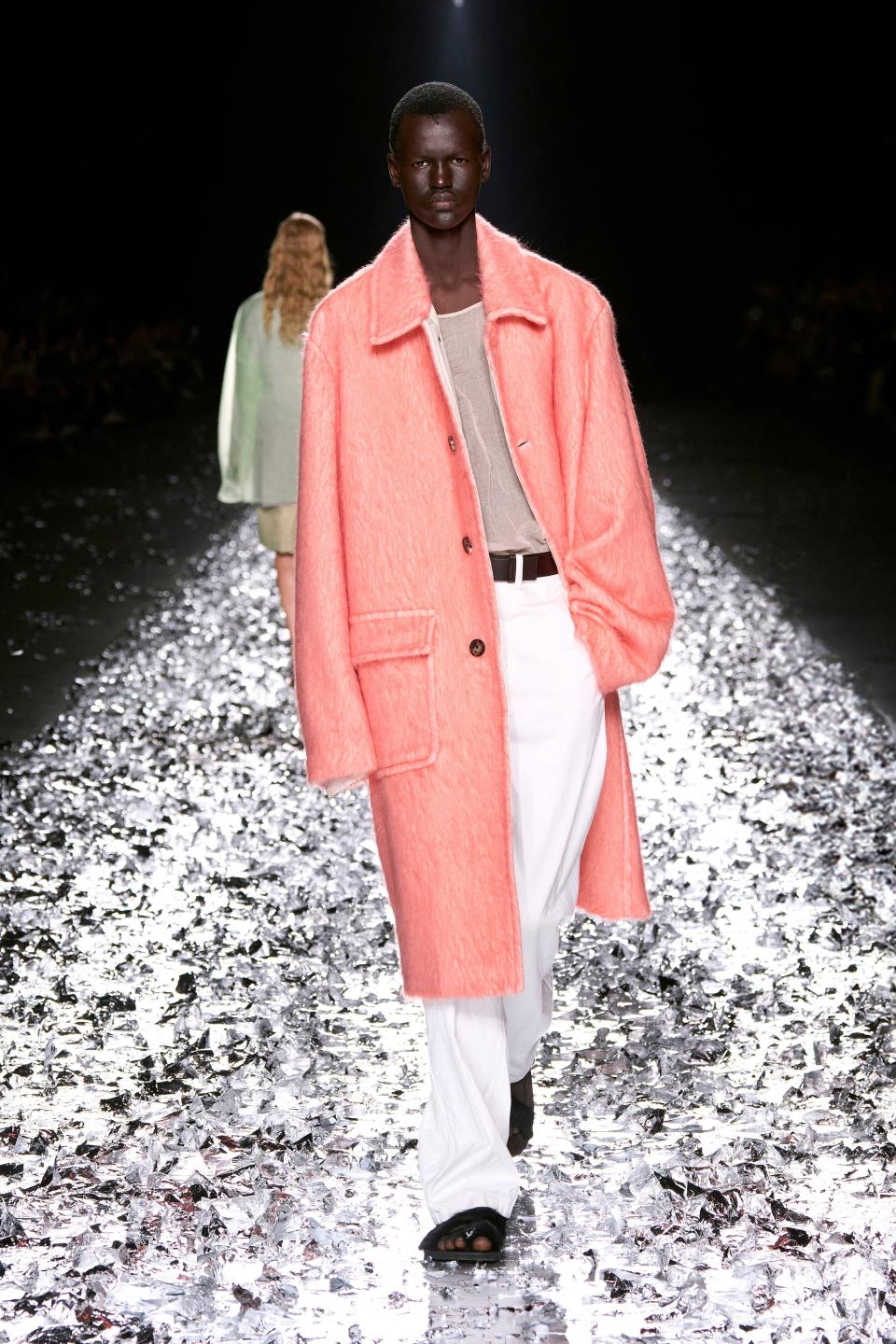
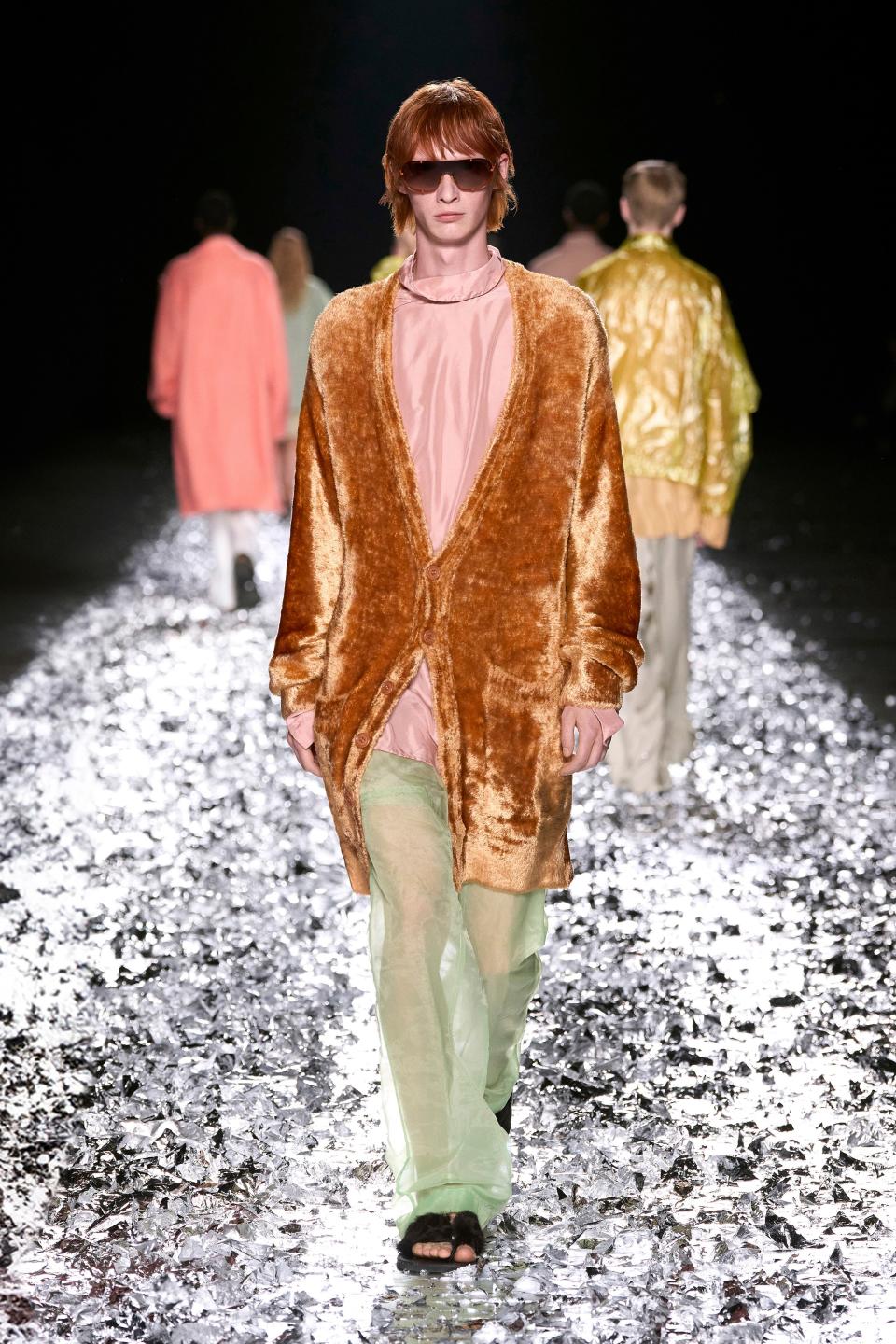
Around 10:00, a few long bass notes reverberated through the factory, signaling it was time to take our seats, which were arranged along a breathtakingly long runway plastered with leaves of ultra-fine silver foil. As the lights came down, guests put their arms around each others’ shoulders. Thus began the only fashion show of the week that nobody wanted to end. Silver leaves swirling around their feet, a cast of Dries Van Noten models from across the decades wore their friend’s final collection. The first model out, wearing a long navy coat, walked with a distinct solemnity; it turned out that he had opened Van Noten’s 1991 runway debut, too. Another man with gray hair glanced here and there at the crowd—it had clearly been a while. More than one appeared to be on the verge of tears. According to casting director Piergiorgio Del Moro, he and Van Noten tracked down many of the long-retired faces on Instagram, and every single one said yes.
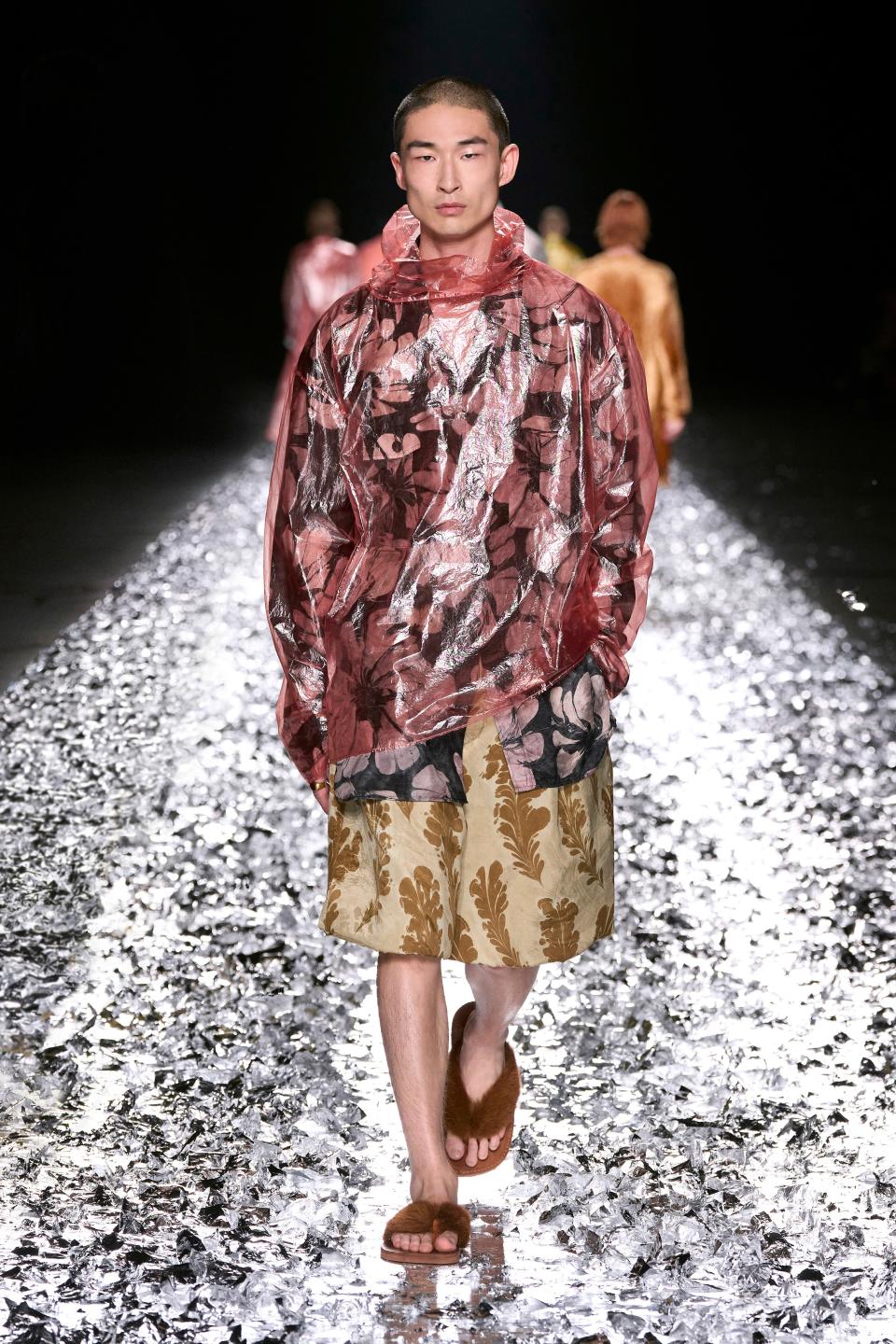

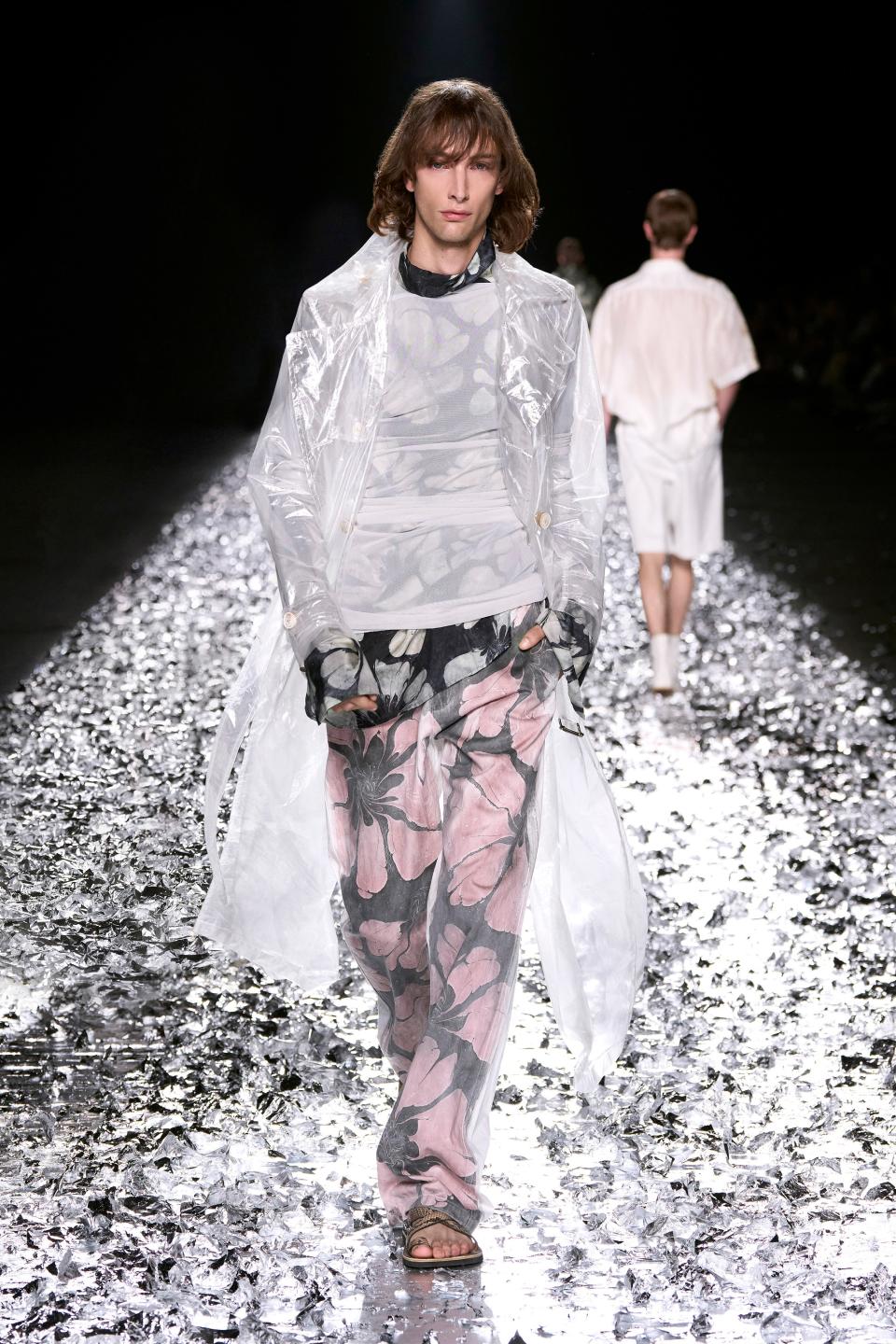
“Time… one of the most complex expressions, memory made manifest,” went the voiceover by David Bowie, an oft-referenced hero of Van Noten’s. The designer was clearly ruminating on the meaning of endings as he put together the collection, but he did not want to end on a greatest hits retrospective. Instead, Van Noten wanted to suggest a way forward, to propose new ideas about how to dress elegantly today and tomorrow—the same as he’s done 149 times before.
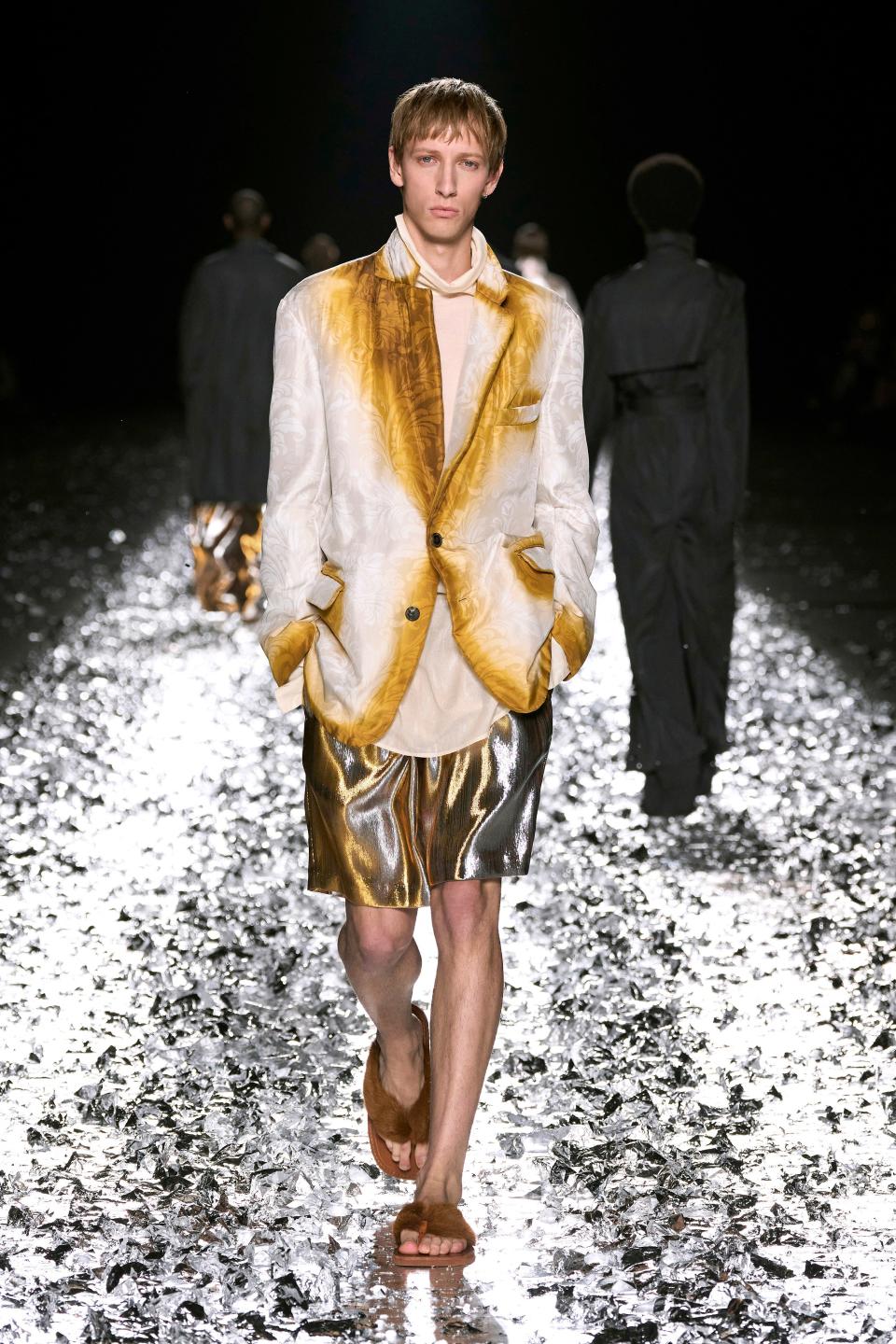
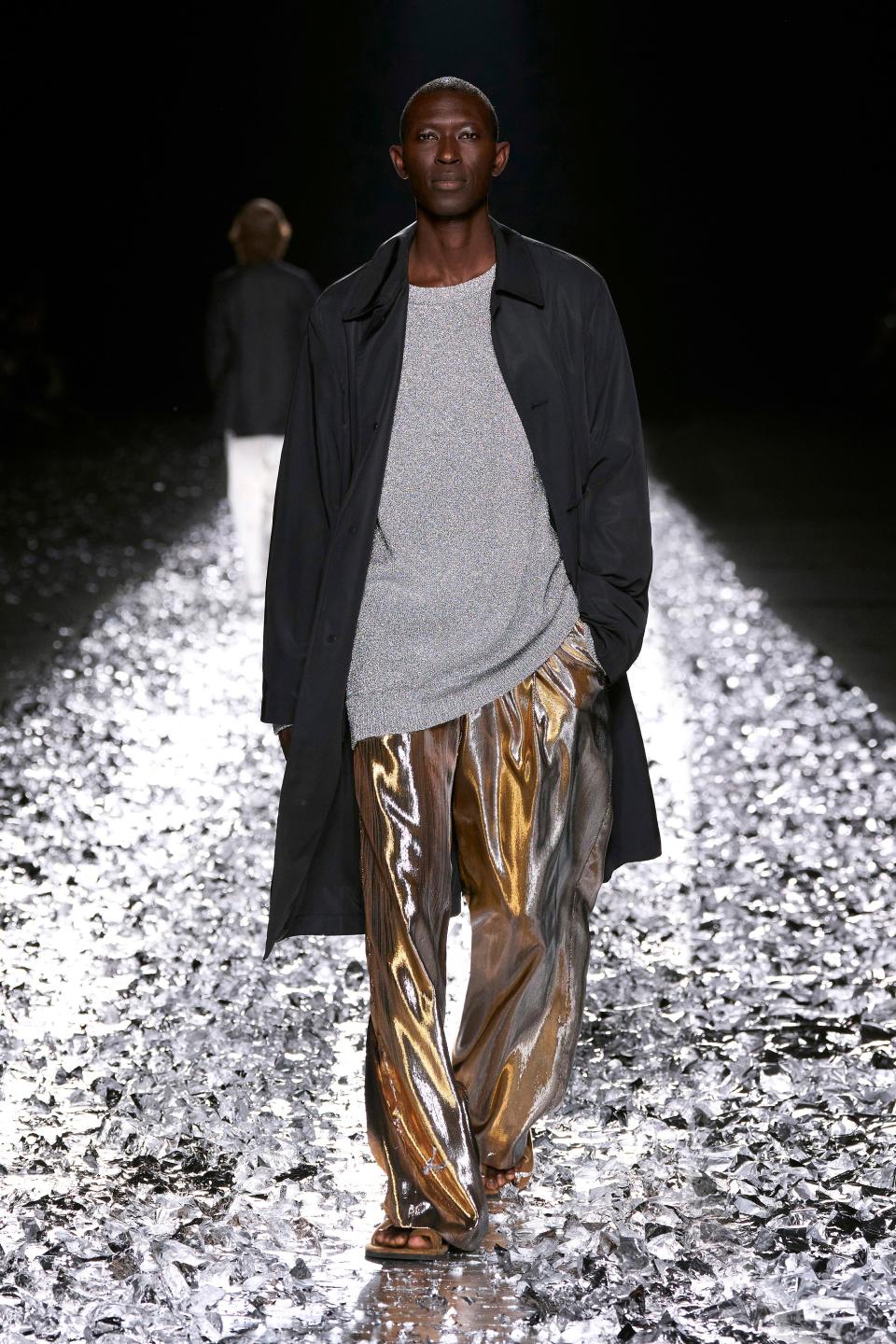
He did so through the techniques that have long made his work so quietly delightful: in light structured tailoring, long and loose, that worked with and not against the body. In imaginative layering, with translucent organza tops and trousers juxtaposed against formal wools. In delicate embroidery, with fine gold and silver threadwork woven across outerwear. In funkily-clashing textures, with seams of shiny purple crinkled polyamide, glossy snakeskin-printed leather, shaggy fluorescent wools, sumptuous velvets, and translucent recycled polyester all running through the lineup. And, of course, in pattern, with large florals made with a traditional Japanese ink-transfer technique erupting across flowy button-ups and trousers and trenches.

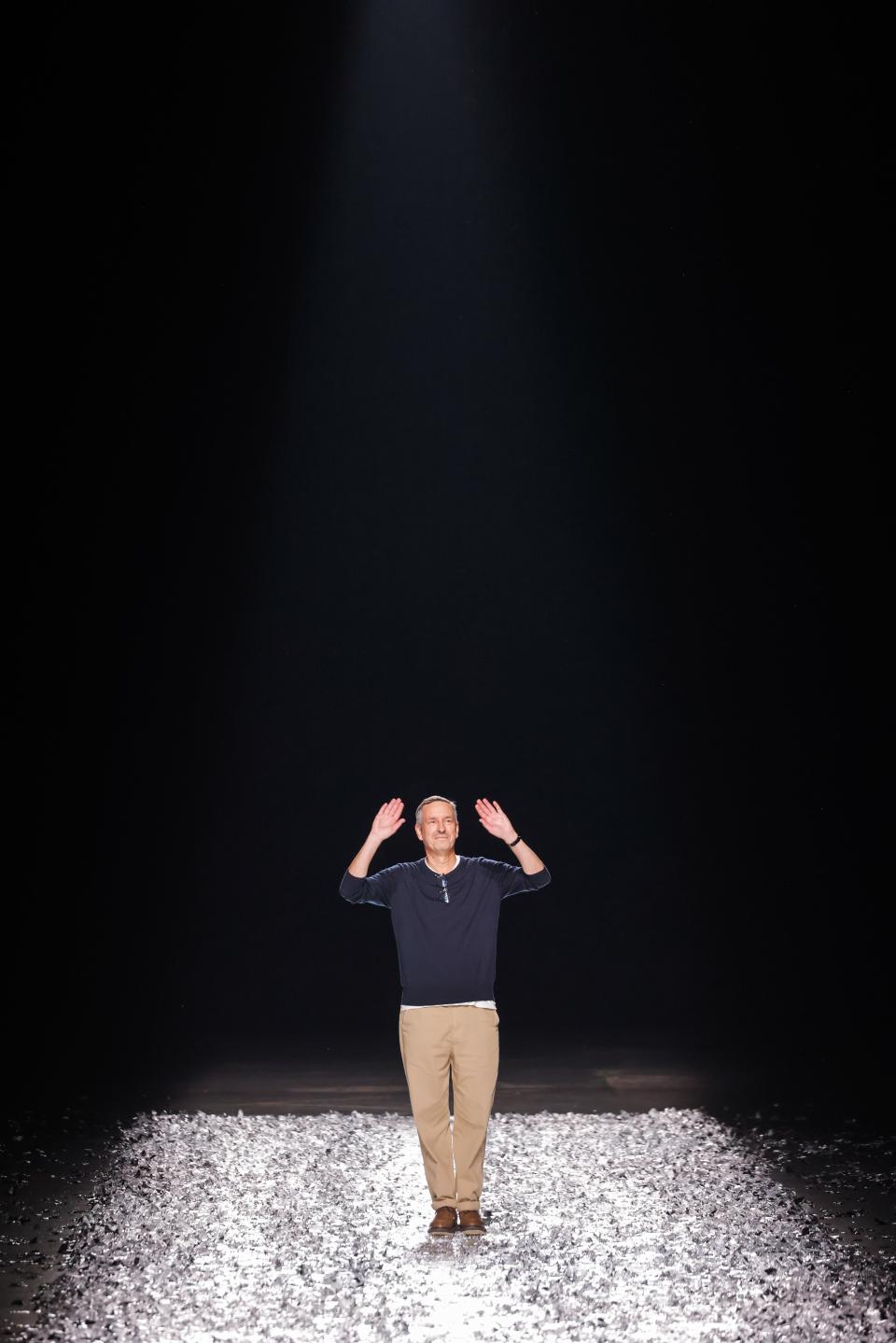
Dries Van Noten: Runway - Paris Fashion Week - Menswear Spring/Summer 2025
Courtesy of Getty Images / Richard BordHow do you put a bow on a generational career? As Bowie’s “Sound and Vision” brought the room to an emotional crescendo, out came a series of shimmery gold trousers and shorts, then a top, and finally a jacket, the fabric fluid like mercury. Then the closer, a swooping tuxedo coat, golden trousers, and humble, strappy sandals. Poetry, Dries Van Noten style. With 800 people on their feet cheering and clapping (and some weeping), including the models on their emotional finale parade, a still-overwhelmed Van Noten came out for his bow, flashing his signature two-handed wave. But the master showman had one more grand gesture. As he exited, he raised his hands one more time, signaling a curtain-drop reveal of—a huge disco ball! Behind the scenes during the show, a crew had hoisted the mirrored globe out of the video cube, bartenders had been pouring Belgian beer by the bucketful, and 2 Many DJs had been queueing the ultimate retirement party playlist. Everyone gathered their feelings and streamed toward the bar. The message was obvious. Rather than cry, Dries wanted us to dance.
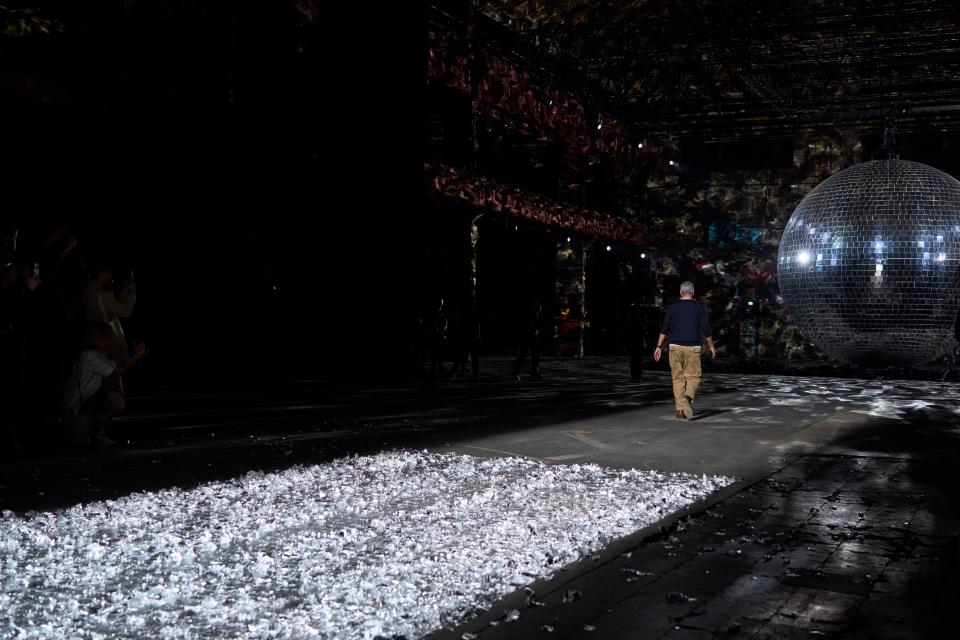
photo: Daniele Schiavello / Gorunway.com
Courtesy of GORUNWAYOriginally Appeared on GQ


